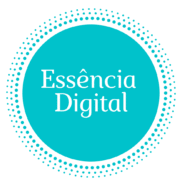The allure of the digital business is undeniable: the freedom to be your own boss, the potential for uncapped income, and the ability to build a global brand from a laptop, anywhere in the world. In 2025, the tools to do so are more accessible and powerful than ever before. But access to tools is not a guarantee of success.
While the barriers to entry have never been lower, the digital marketplace has never been more crowded. A successful digital business isn’t built on a vague idea or a stroke of luck; it’s built on a foundation of strategy, relentless execution, and a deep understanding of the customer.
This guide provides a no-nonsense framework for navigating the journey from a promising idea to a profitable, sustainable digital business.
The Foundation: Fall in Love with a Problem, Not a Product
The single biggest mistake new entrepreneurs make is falling in love with their own solution before they truly understand the problem. A successful business starts not by asking, “What cool thing can I build?” but by asking, “What painful, recurring problem can I solve?”
A business built around a real problem is resilient because the demand is already there. People are actively searching for a solution and are willing to pay for one that works.
How to Find Problems Worth Solving:
- Scratch Your Own Itch: What is a problem you personally face in your work or life? If you have this problem, it’s likely others do too. Many great businesses started this way.
- Become a Digital Anthropologist: Spend time in the online communities where your target audience lives—Reddit, niche forums, Facebook Groups, and the comment sections of popular blogs. Listen for recurring complaints, questions, and frustrations. These are business ideas in disguise.
- Analyze Search Trends: Use free tools like Google Trends or AnswerThePublic to see what people are actively searching for. A high volume of “how-to” or “problem-solving” queries indicates a hungry market.
Architecting Your Business: Choosing the Right Model
Once you have a problem in mind, you need to choose the right vehicle—the business model—to deliver your solution. Each model has distinct advantages and challenges.
- E-commerce (Physical Products):
Pros: Tangible products, high perceived value. Cons: Requires inventory management, shipping logistics, and dealing with supply chains. - Digital Products (Courses, Ebooks, Templates):
Pros: Infinite scalability, high profit margins, instant delivery. Cons: Requires significant upfront time to create and often depends on a strong personal brand to sell. - SaaS (Software as a Service):
Pros: Predictable, recurring monthly revenue (MRR). Cons: Technically complex, requires significant development investment and ongoing customer support. - The Creator Economy (Content-Based):
Pros: Low startup costs, builds a loyal community and brand authority. Cons: Can be slow to monetize, requires relentless consistency in content creation. - Services (Freelancing, Consulting, Agency):
Pros: The fastest path to generating cash flow. Cons: Difficult to scale beyond your own time and effort without hiring a team.
The “Smoke Test”: Validate Your Idea with Minimal Risk
Before you invest months of your life and thousands of dollars building a full-fledged product, you must validate that people will actually pay for your solution. A “smoke test” is a simple experiment to gauge market demand before the product exists.
How to Run a Simple Validation Test:
- Create a One-Page Landing Page: Use a simple tool like Carrd or Leadpages. The page should have a compelling headline, a clear explanation of the problem you solve, and a summary of your proposed solution.
- Have a Single Call to Action (CTA): The goal is to capture intent. Your CTA should be something like “Join the Waitlist for Early Access” or “Pre-Order Now for a 25% Discount.”
- Drive a Small Amount of Targeted Traffic: You don’t need a huge budget. Run a small ad campaign on social media targeting your ideal customer, or share the link in relevant online communities (where allowed).
- Measure the Conversion Rate: What percentage of visitors signed up or pre-ordered? A strong conversion rate (typically 10% or higher for a waitlist) is a powerful signal that you’re on the right track.
The MVP Mindset: Launch, Learn, Repeat
Perfection is the enemy of progress in the digital world. Don’t spend a year trying to build the perfect, feature-complete product. Instead, adopt the Minimum Viable Product (MVP) mindset.
An MVP is the most basic version of your product that solves the core problem for your earliest customers. The goal of the MVP is not to be perfect; it is to learn.
- Launch Fast: Get your MVP into the hands of real users as quickly as possible.
- Iterate: Use that feedback to make small, continuous improvements.
The most successful digital businesses operate in a constant loop of Build -> Measure -> Learn. They adapt faster than their competition.
Build an Audience First, Then a Business
In the past, companies built a product and then went looking for customers. In the modern digital economy, the most successful entrepreneurs often do the opposite: they build an audience, and then create a product for that audience.
Start building your audience from day one, even before your product is ready.
- Choose One Channel: Pick one social media platform or content format (a blog, a newsletter, a YouTube channel) where your target audience spends their time, and go all-in on it.
- Teach Everything You Know: Share your expertise freely. Provide immense value by teaching, solving small problems, and answering questions. This is the fastest way to build trust and position yourself as an authority in your niche.
Conclusion: The Journey is a Marathon
Starting a digital business in 2025 is less about having a single, flawless idea and more about having a disciplined process for testing, learning, and adapting. The journey of a digital entrepreneur is a marathon, not a sprint.
Focus on solving a real problem for a specific group of people, build a genuine relationship with them through valuable content, and iterate your way to success. The tools are ready. The opportunity is here. Start building.

